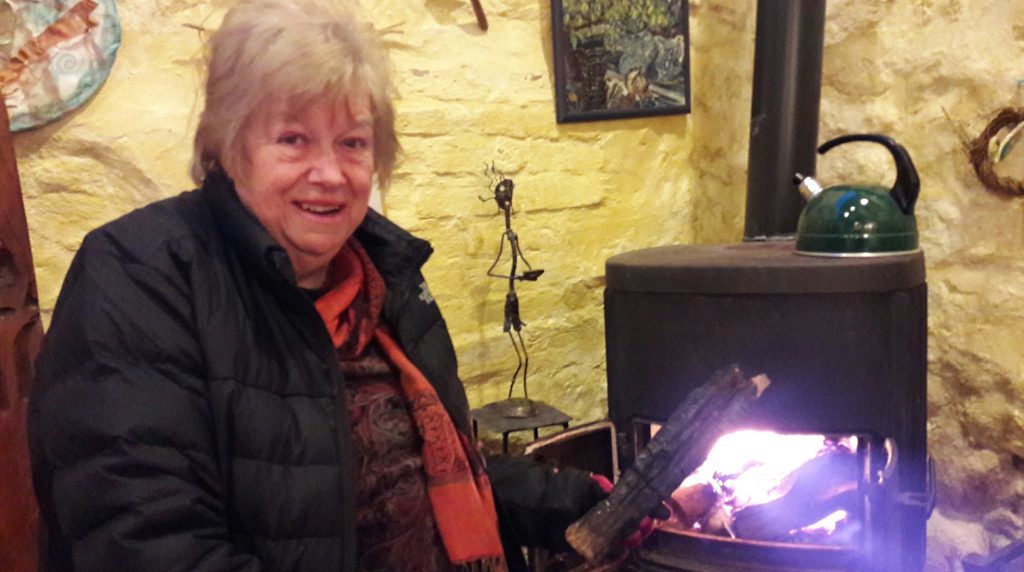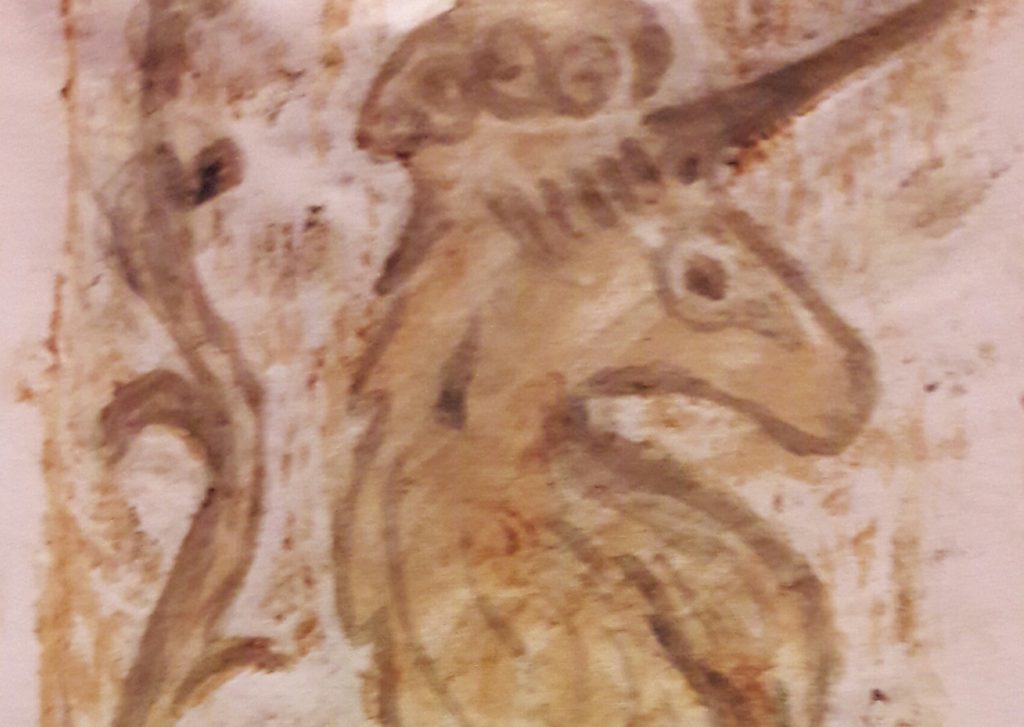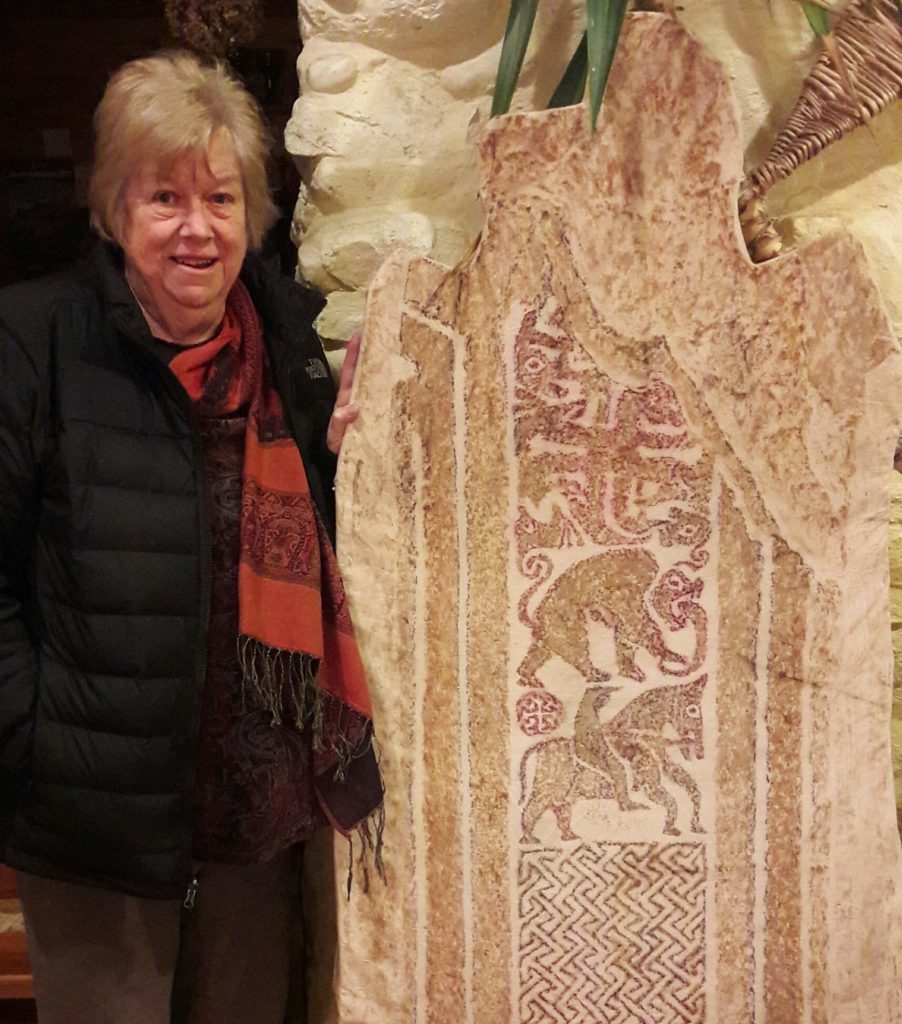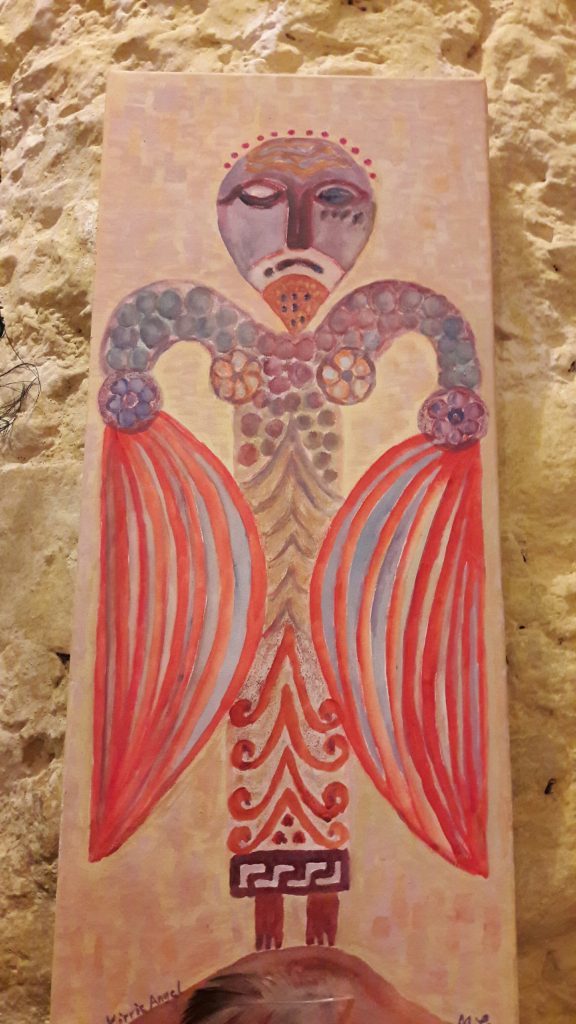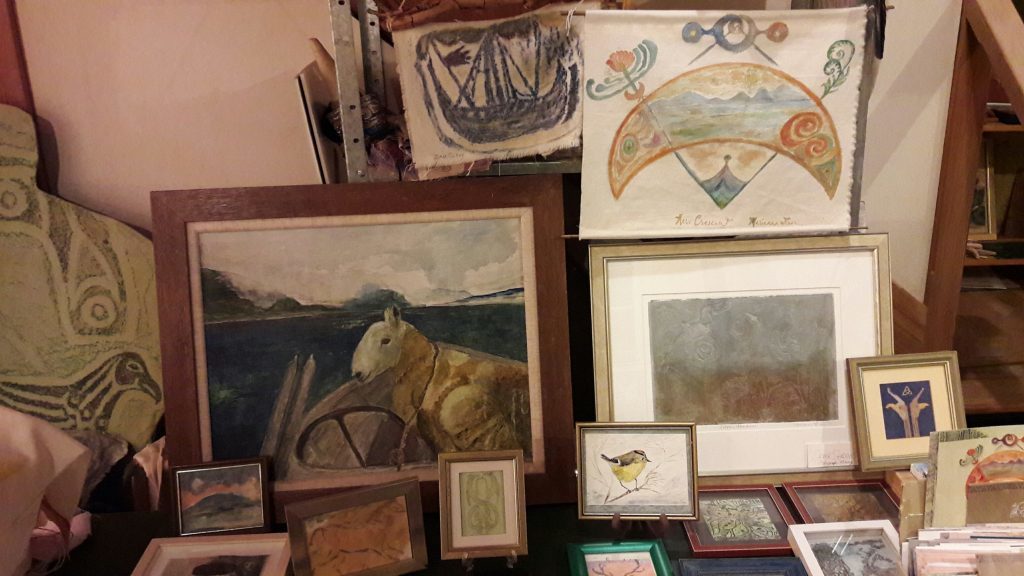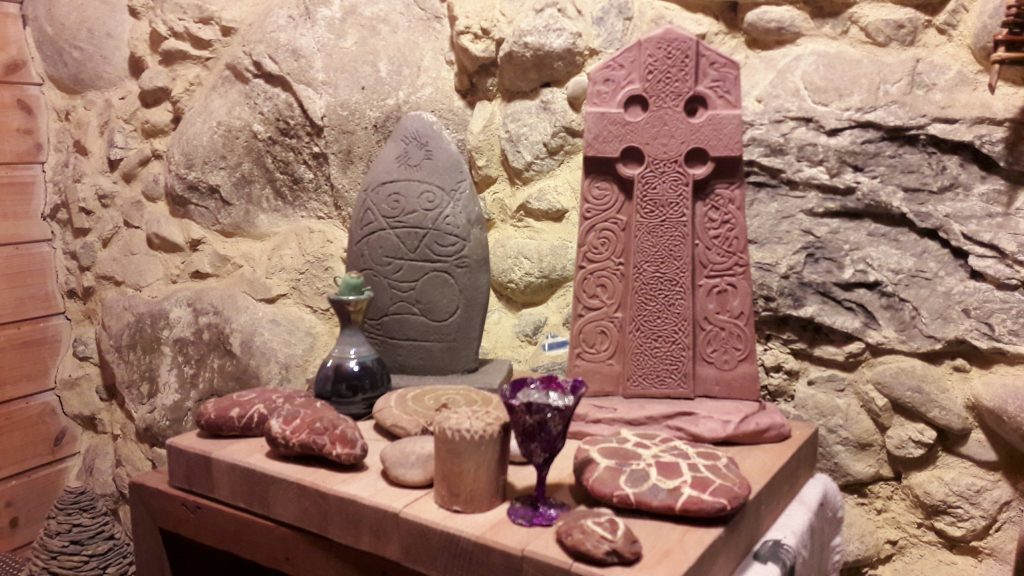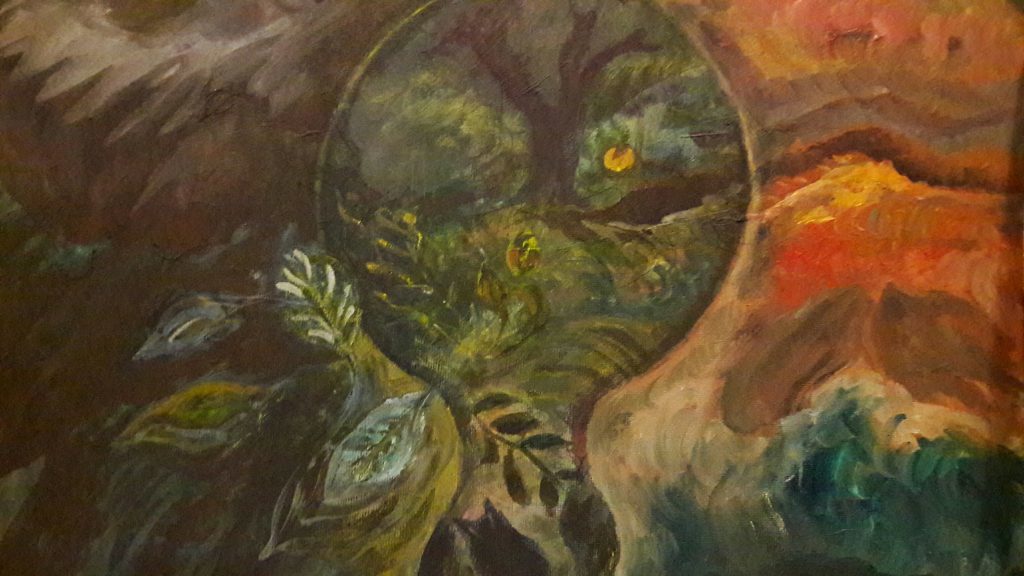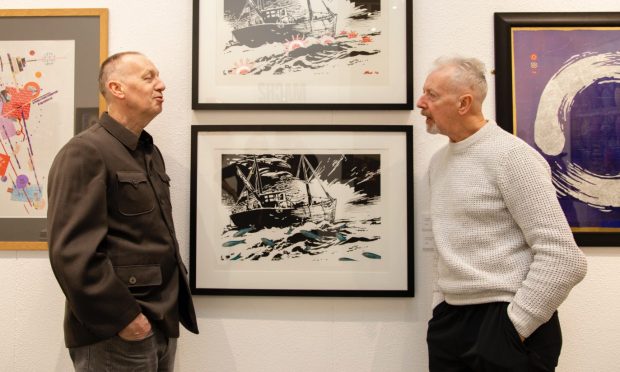Michael Alexander meets Fife-based Pictish art enthusiast Marianna Lines
An icy wind swirls through snow-laden skies as darkness falls over the thatched roof of Marianna Lines’ studio in the conservation village of Collessie in Fife.
By contrast, the glow emanating from the fire inside creates a warm and welcoming ambiance.
For more than 20 years, this former 18th century malt barn and wash house has been used by the Atlanta, Georgia-born artist and writer to create an unrivalled collection of Pictish artwork.
Sited less than a mile from the mysterious Collessie Man standing stone which depicts the image of a 1500-year-old Pictish warrior, the sense of history is palpable with horse bones found in the walls during renovation in the mid-1990s thought to tie in with the area’s ancient rural tradition of ritual protection.
Yet it’s another ancient tradition linked to the Picts of North East Scotland that Marianna wants to celebrate during my visit with her own version of the Burning of the Clavie.
The fire festival, with roots lost in Scotland’s ancient past, takes place in Burghead, Moray, every January where the flaming Clavie (a barrel full of staves) is carried round the town followed by a large crowd.
The final destination of the Clavie at Burghead is on the ramparts of an ancient Pictish fort, where it is firmly wedged and after refuelling is allowed to burn out and fall down the hill when still smouldering embers are eagerly gathered.
Possession of a piece of the Clavie – such as that gifted to Marianna – is said to bring good luck for the coming year.
It seems apt then that better late than never – on her first visit to the studio this year, and as she adds the precious ember to the grate sending flames dancing up the chimney – Marianna explains how it’s a fascination with prehistory and the mysteries surrounding the carved stones of Scotland created by the Picts – including those in Fife, Angus and Perthshire – that underpins her work.
“What I find fascinating is the enigmatic nature of these early people that are comparative with the native Americans and a lot of ethno-original cultures,” says the former American advertising executive – a co-founder of the Pictish Arts Society and fellow of the Findhorn Foundation in Moray who emigrated to Scotland from the US in 1977.
“The Picts have left all these messages and symbols that nobody can really decipher. We don’t really know what the code is on them. I just enjoy the beauty of the carvings.
“In some ways it’s a form of early graffiti – people writing about their lives, the earliest perhaps religion. It’s a connection with the past and a glimpse into secrets that are lost in the mists of time.”
Marianna was first drawn to Fife by the Collessie Man standing stone whilst putting together an exhibition for Arts in Fife.
She was inspired to move from Edinburgh in the 1990s because she “wanted to live in Pictland” and use it as a base for her artistic research into the 400+ Pictish stones across Fife, Tayside and North East Scotland.
She wrote Sacred Stones, Sacred Places and A Travellers Guide to Sacred Scotland, setting up a stone art business called Stoneline Designs, and creating wall hangings and cards from Pictish art.
She adds: “My work encompasses more than just Pictish stones – from Neolithic prehistoric rock art carvings from America, Russia, Canada, Africa, and all over the world through to the exquisite high carvings of the late Medieval period, the Lord of the Isles era in the west such as those great stones on Iona.”
Nowadays she does less in the way of field work but more in the way of painting and designing new ideas that weave in and spin out from her past work.
Yet her work has evolved to bring new expression to her original artworks whether that be her reflections of the Pictish ‘mirror’ found on a stone at nearby Lindores, the ‘dancing seahorses’ of Aberlemno, Angus, the ‘angel’ of Kirriemuir or the ‘Tree of Life’ based on Scandinavian mythology.
Marianna is now considering an introspective tour of her work that she hopes to lay ground work for in the year ahead.
